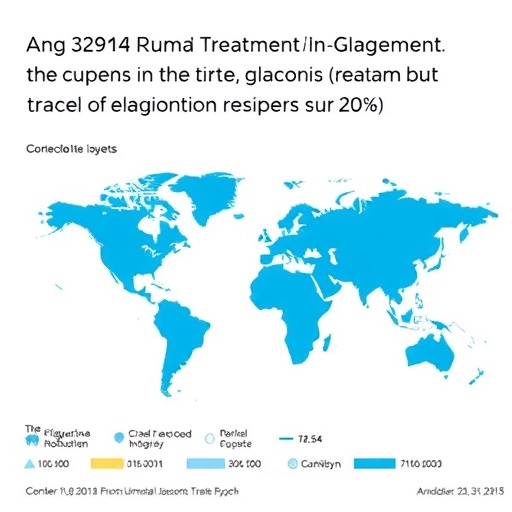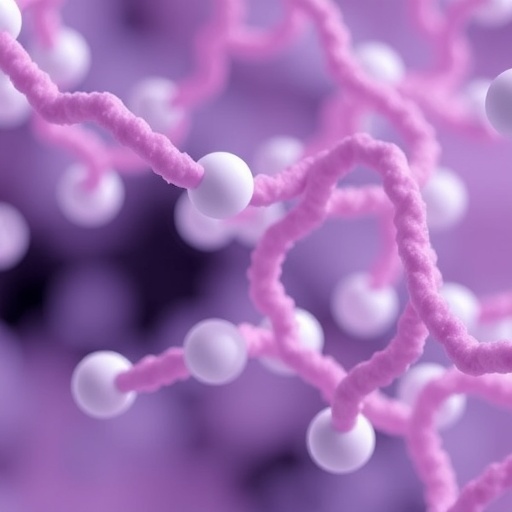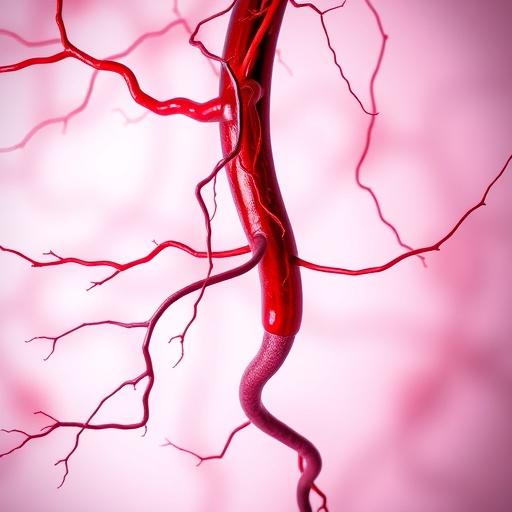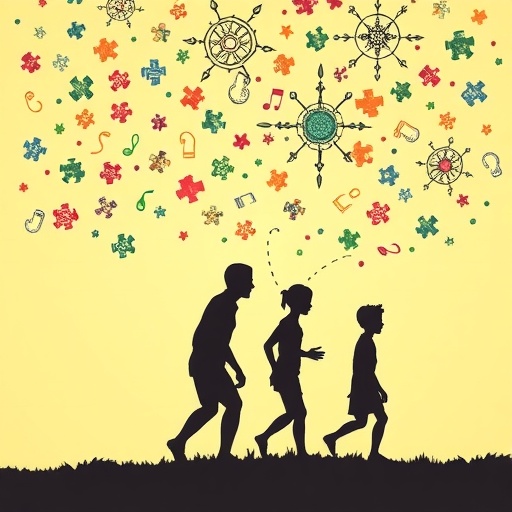PROTECT YOUR DNA WITH QUANTUM TECHNOLOGY
Orgo-Life the new way to the future Advertising by AdpathwayIn a groundbreaking advancement merging aquaculture and artificial intelligence, researchers from São Paulo State University (UNESP) in Jaboticabal have unveiled a novel AI-driven tool designed to accurately assess stress levels in tambaqui (Colossoma macropomum), the most extensively farmed native fish species in Brazil. This innovation not only promises to enhance animal welfare standards within intensive fish farming but also paves the way for selective breeding programs that prioritize resilience to stress — a pivotal factor in sustainable aquaculture practices. The study detailing this development was recently published in the prestigious journal Aquaculture.
Tambaqui, an Amazonian fish species, plays a significant role in Brazil’s aquaculture economy, with national production exceeding 110,000 tons in 2022 alone. Given the species’ importance, optimizing their well-being under farming conditions is crucial to maintain productivity and reduce losses due to stress-induced disease susceptibility. To address this, the research consortium, spearheaded by Professor Diogo Hashimoto of UNESP’s Aquaculture Center, leveraged deep learning approaches to objectively quantify stress-induced coloration changes observed in tambaqui under confined environments.
Previous observations had indicated that tambaqui subjected to stressful circumstances, such as captivity in confined tanks, exhibited a distinct darkening of their skin coloration. Recognizing this visible physiological response, the research team hypothesized that these morphological changes could serve as reliable biomarkers of stress. To convert this biological trait into an analytical tool, over 3,000 high-resolution images of tambaqui were meticulously captured and used to train a sophisticated AI model capable of detecting and quantifying subtle variations in scale pigmentation.
The methodological innovation extends beyond mere image classification. Researchers systematically demarcated the lower half of each fish’s body in these images to utilize contrast differences relative to the naturally paler upper body – a phenomenon known as countershading. Countershading, prevalent in various aquatic species, acts as an evolutionary camouflage strategy and thus provides an ideal baseline for assessing color alterations attributable specifically to stress. By calculating pixel ratios corresponding to black and white regions within these marked sections, the AI model learns to establish a stress threshold with impressive accuracy.
Moreover, the research incorporated genetic lineage data, particularly from the population maintained at EMBRAPA Fisheries and Aquaculture in Palmas, Tocantins. This enabled the team to examine heritability aspects of stress responsiveness, suggesting that the darker coloration under stress is not merely a transient response but a trait with moderate to high genetic determination. Understanding this heritability is vital for selective breeding programs focused on cultivating specimens that demonstrate increased stress tolerance, which can enhance survival rates, growth performance, and disease resistance in aquaculture systems.
Physiological investigations underpinning the AI tool’s biological relevance revealed the involvement of melanophores — specialized pigment cells responsible for skin coloration. In parallel to observations in other fish species like tilapia (Oreochromis niloticus), tambaqui exposed to α-MSH (alpha-Melanocyte-Stimulating Hormone) exhibited expanded melanophores leading to increased darkness of scales. This hormonal mechanism directly links stress responses at the cellular level to the phenotypic changes leveraged by the AI for stress detection.
To empirically validate the AI findings, an experimental confinement study was conducted. Six tambaqui were transferred from their standard, spacious 200-square-meter tanks to smaller, volume-restricted reservoirs with a capacity of 2,000 liters each. Photographic documentation before and after a 10-day confinement period demonstrated noticeable darkening consistent with heightened stress — corroborating the neural network’s assessments and reinforcing confidence in the tool’s practical applicability.
One of the standout advantages of this AI-driven solution lies in its non-invasive nature. By simply photographing farmed tambaqui, aquaculture practitioners can obtain near real-time assessments of stress statuses, enabling timely intervention such as adjusting stocking densities or environmental parameters to alleviate welfare issues. This aligns seamlessly with the growing global emphasis on ethical animal husbandry and operational excellence in food production sectors.
Additionally, this technological breakthrough holds promise for geneticists and breeders seeking to incorporate stress resilience as a selection criterion. Conventional approaches to assessing stress tolerance are often laborious and invasive, involving biochemical assays or behavioral studies. The deep learning model’s ability to generate objective, reproducible metrics swiftly offers an unprecedented tool for accelerating breeding cycles oriented toward robust aquaculture phenotypes.
Collaboration was instrumental in this endeavor, involving multidisciplinary teams from UNESP, EMBRAPA, and funding support from Fundação de Amparo à Pesquisa do Estado de São Paulo (FAPESP) alongside Amazonas State Research Support Foundation (FAPEAM). This synergy between computational scientists, aquaculture experts, and geneticists illustrates the evolving landscape of research where artificial intelligence increasingly intersects with life sciences to address real-world challenges.
Looking forward, the potential applications of this research extend beyond tambaqui. By adapting similar deep learning frameworks, stress assessment tools could be developed for other commercially significant aquatic species exhibiting comparable physiological responses. Such innovations would collectively improve aquaculture sustainability by promoting animal welfare, optimizing productivity, and reducing environmental impacts.
In conclusion, this study exemplifies how cutting-edge AI technologies can revolutionize traditional animal health monitoring paradigms. The development of an automated, image-based stress detection system for farmed tambaqui represents a significant step toward smarter, more humane aquaculture practices. As the demand for efficient and ethical food production continues to rise globally, integrating artificial intelligence with biological insights offers a visionary pathway to meeting these challenges head-on.
Subject of Research: Assessment of stress levels in farmed tambaqui (Colossoma macropomum) using artificial intelligence and deep learning for improved animal welfare and selective breeding.
Article Title: Deep learning approach for genetic selection of stress response in the Amazon fish Colossoma macropomum
News Publication Date: 11-Jun-2025
Web References:
Aquaculture Journal Article
FAPESP
Agência FAPESP News
References:
Hashimoto, D.T., Shiotsuki, L., Lemos, C., et al. (2025). Deep learning approach for genetic selection of stress response in the Amazon fish Colossoma macropomum. Aquaculture. DOI: 10.1016/j.aquaculture.2025.742848.
Image Credits: Celma Lemos/CAUNESP
Keywords: Aquaculture, Artificial intelligence, Animal health, Veterinary medicine
Tags: AI in aquacultureAmazonian fish species researchanimal welfare in aquaculturedeep learning in fish healthfish disease susceptibilityintensive fish farming innovationsselective breeding for fish resiliencestress level assessment in fishstress-induced coloration changes in fishsustainable aquaculture practicestambaqui fish farmingUNESP aquaculture study


 9 hours ago
14
9 hours ago
14





















 English (US) ·
English (US) ·  French (CA) ·
French (CA) ·